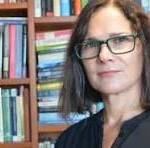‘Made’ in Australia: The Journal SOUTH ASIA-by Michael Roberts

Source:Thuppahis
Image Source:Thuppahis
South Asia: Journal of South Asian Studies ranks as the leading academic journal in South Asian studies. It provides a forum for scholarly research, comment and discussion on the history, society, economy, culture and international relations of the South Asian region, drawing on a range of disciplines from the humanities and social sciences. South Asia publishes cutting edge, innovative, conceptually interesting, original case studies and new research, which shape and lead debates in the field.
Professor Kama Maclean: a key figure in the history of the journal
EDITORS
Shameem Black (Australian National University) 2022-current
Priya Chacko (University of Adelaide) 2022-current
Jason Cons (University of Texas at Austin) 2022-current
Ali Usman Qasmi (Lahore University of Management Sciences) 2022-current
PAST EDITORS
Kama Maclean (University of New South Wales) 2010-2022
Ian Copland (Monash University) – 2002-2010
Howard Brasted (University of New England) – 1984-2001
Don Ferrell (La Trobe University) – 1980-1984
Hugh Owen (University of Western Australia) – 1971-1979
BRIEF HISTORY
South Asia began in 1971 as an annual publication under the editorship of Hugh Owen at the University of Western Australia (UWA) with Jim Massselos from the University of Sydney as reviews editor. The initiative was the undertaking of the South Asian Studies Association of Australia and New Zealand (later renamed South Asian Studies Association), a body formed at a conference organized by Professor Ravinder Kumar in 1969 at the Australian National University (ANU) to foster South Asian Studies. A consensus emerged at the conference that such a journal was needed, and subsequent enquiries elicited encouraging responses from scholars in Asia, America and Europe. The University of Western Australia Press agreed to publish South Asia, with the collaboration of the Centre for Asian Studies at UWA. The publication of the journal was also financially supported by Heidelberg University, through the good offices of Professor Dietmar Rothermund, who was formerly based at the ANU. The Australian Academy of the Humanities provided generous financial assistance in the early years of the journal.
The editorial aim was to make South Asia an international journal of the highest academic standard. The journal also featured a ‘News Items’ section compiled by Dr Ian Catanach (University of Canterbury, Christchurch) which reported on the scholarly development of the field, conveying information on new university courses, conferences, institutions and archival materials related to South Asia from around the world.
The initial focus of the journal placed historical studies of South Asia at its forefront. But as South Asia grew to a bi-annual publication in 1978, the journal encouraged interdisciplinary scholarship publishing cutting edge research across the humanities and the social sciences. Upon Hugh Owen’s retirement, Don Ferrell at La Trobe University assumed the editorship of South Asia in 1980 and further broadened the scope of the journal inviting submissions from all disciplines relating to the geographical area of South Asia. A new agreement was also struck with Manohar Press in New Delhi for the publication and distribution of the journal.
In 1984, the University of New England (UNE) became the new home of South Asia where it experienced steady growth under the selfless editorship of Howard Brasted, Denis Wright as treasurer and Carl Bridge as reviews editor. Bruce Watson later joining the team as Assistant Editor in the early 1990s. This transition also marked other changes as the publication of the journal moved first to Hong Kong, then to Armidale, New South Wales. South Asia progressed gradually to publishing three issues a year in 1994 with one guest-edited Special Issue each year.
After almost two decades at UNE, South Asia relocated to Monash University and Ian Copland’s editorship in 2002. The Melbourne-based editorial team, which included Sanjay Srivastava, Kate Brittlebank and Salim Lakha, embarked on a strategy of promoting greater diversity in the content of the journal by encouraging contributions from scholars in areas not represented or only marginally represented, such as Indology, political economy, popular and urban culture, gender, globalisation, media studies and art history. The aim of the Melbourne team was to respect both the disciplines and fields of inquiry represented in South Asian scholarship and the full breadth of contemporary theories of knowledge. In 2001, the journal moved to three issues per year. After Ian Copland’s retirement in 2010, the editorship moved to Kama Maclean, from the University of New South Wales, while the administration of the journal, in the capable hands of Vivien Seyler, continues to be based at Monash. Prof. Kama Maclean’s extraordinary thirteen-year tenure as Chief Editor of the Association’s journal, South Asia: Journal of South Asian Studies, is marked by an impressive legacy of 13 volumes, 57 issues, and 684 peer-reviewed articles. Her strategic vision, tireless dedication, and exceptional leadership have elevated the journal to new heights, resulting in a substantial increase in submissions and outstanding citation metrics. Prof. Maclean’s invaluable contributions have significantly enriched the field of South Asian studies and set a standard of excellence that will endure for years to come.
South Asia moved to four issues a year in 2013, and due to overwhelming demand, six issues in 2018. The goal of the current editorial team has been to streamline the process of internal review, with the appointment of a board of Associate Editors, enhance editorial representation based in South Asia, reduce the length of the publication queue and attract time-critical and significant scholarship. South Asia has a strong social media presence, with a dedicated Social Media Editor and thousands of followers on Facebook and Twitter. In 2019, the journal was included in the Clarivate Social Sciences Citation Index. According to the Scimajo Journal Rankings, in 2016, 2017 and 2018, South Asia was in the top quartile (Q1) for History and Cultural Studies, and the second quartile (Q2) for Development and Sociology/Political Science.








